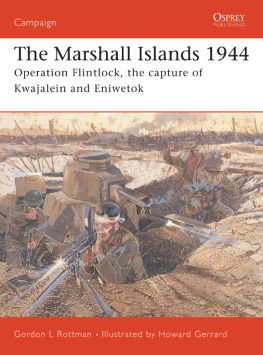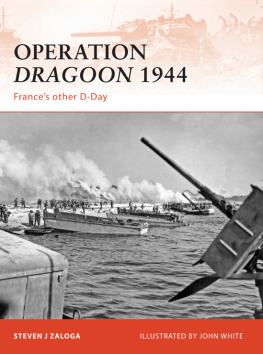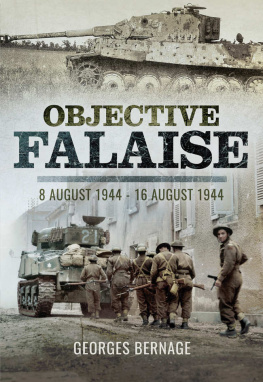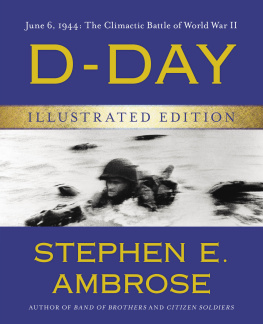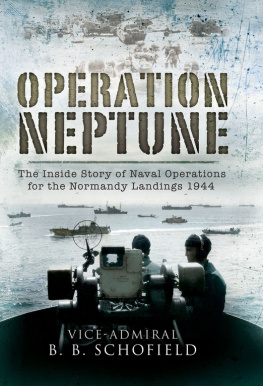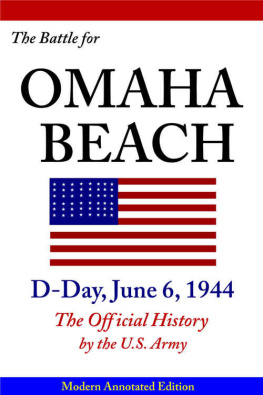This edition is published by PICKLE PARTNERS PUBLISHINGwww.picklepartnerspublishing.com
To join our mailing list for new titles or for issues with our books picklepublishing@gmail.com
Or on Facebook
Text originally published in 1987 under the same title.
Pickle Partners Publishing 2013, all rights reserved. No part of this publication may be reproduced, stored in a retrieval system or transmitted by any means, electrical, mechanical or otherwise without the written permission of the copyright holder.
Publishers Note
Although in most cases we have retained the Authors original spelling and grammar to authentically reproduce the work of the Author and the original intent of such material, some additional notes and clarifications have been added for the modern readers benefit.
We have also made every effort to include all maps and illustrations of the original edition the limitations of formatting do not allow of including larger maps, we will upload as many of these maps as possible.
ANALYSIS OF DEEP ATTACK OPERATIONS OPERATION BAGRATION BELORUSSIA 22 JUNE-29 AUGUST 1944
by
Lieutenant Colonel William M. Connor
March 1987
TABLE OF CONTENTS
Contents
OPERATION BAGRATION 22 June-28 August 1944
1. Strategic Setting.
a. Principal Events.
Operation BAGRATION took place during what the Soviet analysts consider the third period of the war: that of the Soviet strategic offensives which marked the ascendancy of the Soviet armed forces over the German Wehrmacht. During this period, the armed forces of the Soviet Union held the strategic initiative and used it to defeat the Wehrmacht, gain control of Eastern Europe, and invade Germany proper, meeting Allied forces on the Elbe River on 25 April 1945. The period is regarded as beginning January 1944 and ending with the V-E Day, 7 May 1945.
During the first two major periods of the war, the Red Army had had first to conduct a strategic defense, more through force of circumstances than through any rational plan. During this period of strategic defense, which lasted from 22 June 1941 to 19 November 1942, the Wehrmacht generally held the strategic initiative and used it to advantage. Their first offensive, from 22 June to 5 December 1941 had nearly ended with the capture of Moscow, as well as resulting in the defeat of the Soviet Army which the Wehrmacht saw before it on 22 June 1941. They had not, however, counted upon the Soviet ability to raise new formations and manpower nor the movement of the factories east. Given the strategic surprise of the German invasion, the Soviet government had shaken but not fallen, and the governmental reorganization which followed would be one of the major factors in the ability of the Soviet Union to decide strategy and conduct operations. Nor could the Soviet Union receive substantial help from potential allies during this first advance by the Germans, as Great Britain was just capable of defending her own territory against the Germans. Finally, the Germans had not reckoned upon the Soviets' use of their Far Eastern army to reinforce their European forces, made possible by the Neutrality Pact signed between Japan, Germany's ally, and the Soviet Union in April 1941. As strategic consumption of German forces proceeded and they met a reorganized and reinforced Red Army in the battle for Moscow, the German tide was halted, and the Soviet counteroffensive began on 6 December, growing out of local counterattacks which exposed the weakness of the forward German forces. In the spring of 1942, the Soviet forces again attempted an offensive, but they were defeated, and the German forces used this event to launch their own offensive in southern Russia in summer 1942. This resulted in the Stalingrad campaign, in which the German armies were halted at Stalingrad on the Volga River and in the Caucasus mountains by Russian defense and strategic consumption of their own forces again.
The second period of the war began with the Soviet counteroffensive against the German forces surrounding Stalingrad. This time, however, the counteroffensive was not a development of events on the ground but rather had been planned by Stavka, the Soviet High Command. The counteroffensive was successful, and the German Sixth Army was surrounded and destroyed by February 1943. However, when the Soviet forces attempted to exploit their success, they were defeated by the Germans in a counteroffensive by Manstein from 18 February to the end of March 1943. The lesson was clear that the Red Army was still not able to take the offensive against the Wehrmacht. Thus, for the summer campaign, the Stavka decided not to initiate offensive operations but to wait for the expected German offensive, defeat it, and then conduct a counteroffensive. Due to good intelligence from such HUMINT sources as Sorge in Tokyo, Lucy, and the Red Chorus and the battlefield preparations of the Germans, the Red Army determined the location, Kursk, and timing, July, of the German offensive. The Red Army - then prepared their positions and gathered reserves to meet the threat. The result was the complete defeat of the last strategic offensive effort to be made by the German Wehrmacht on the Eastern Front. The Red Army followed up its successes with another counteroffensive which liberated the Ukraine east of the Dnieper River and its capitol Kiev by November 1943, and in December expanded its bridgeheads on the western bank of the Dnieper River, preparatory to freeing the rest of the Ukraine.
By the beginning of 1944, the Red Army clearly had the initiative on the Eastern Front; moreover, since the beginning of the second period, the Soviet Union also had strong allies who could provide assistance in two ways: the United States and Great Britain. The main factor in the alliance had been the entry of the United States into World War II since the Japanese attack on Pearl Harbor in December 1941. As the Soviet Union saw it, the most important contribution which these allies could make to her strategically would be to open a second Front against the Germans. Although this was not to happen during the first period, they did contribute in two other ways. They commenced Lend-Lease aid, although this would not amount to sufficient quantities to affect Soviet operations until late 1943 and 1944. They also opened indirect attacks on Germany through the initiation of the strategic bombing campaign against Germany proper and commencing offensives and landings against Axis forces in North Africa (at the beginning of the Soviet's second period). The invasions of Sicily and Italy followed in the second period, knocking Italy out of its alliance with Germany and diverting German forces to defend in Italy. The invasion of Sicily may also have contributed to the German decision to break off its Kursk offensives as well in July 1943. Moreover, by the end of the second period of the war, the Allies had finalized their plans for the opening of the Second Front directly by landing in northern and southern France in May 1944, and the Soviet leadership had been so informed at the Teheran Conference in November 1943. Indeed, just the threat of the invasion had been sufficient to act as a distraction to the Germans by this time, and Lend-Lease aid had now entered the Soviet armed forces in quantity.
In the third period of the war, therefore, the Soviet Union held the strategic initiative, and the year opened with the first two of what would come to be known as the Ten Destructive Blows of 1944: Leningrad and the Ukraine. The offensive at Leningrad commenced on 14 January 1944 and ground to a halt on 1 March with the German siege of Leningrad broken, the German Sixteenth and Eighteenth Armies defeated, Soviet advances of up to 200 kilometers, and Soviet forces on the border of Estonia. The blow in the Ukraine commenced on 24 January 1944, lasting until mid-April, and involved all of the fronts in the Ukraine. Finally, the various fronts were ordered by Stavka to go on the defensive between 17 April and 6 May to prepare for the summer offensive.


![William M. Connor Analysis of Deep Attack Operations: Operation Bagration, Belorussia, 22 June - 29 August 1944 [Illustrated Edition]](/uploads/posts/book/291120/thumbs/william-m-connor-analysis-of-deep-attack.jpg)
